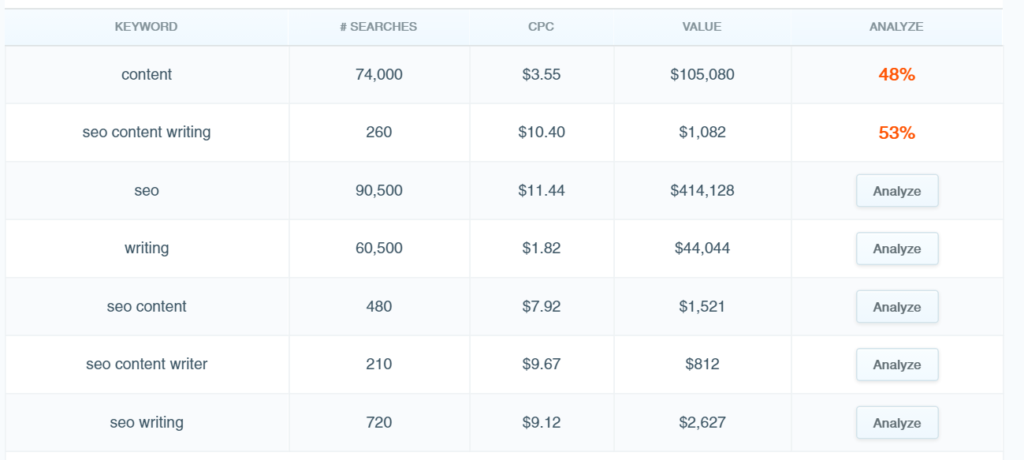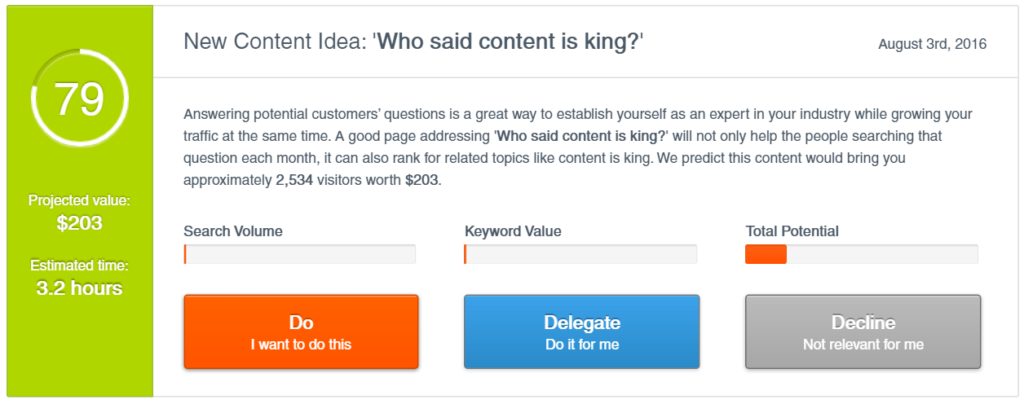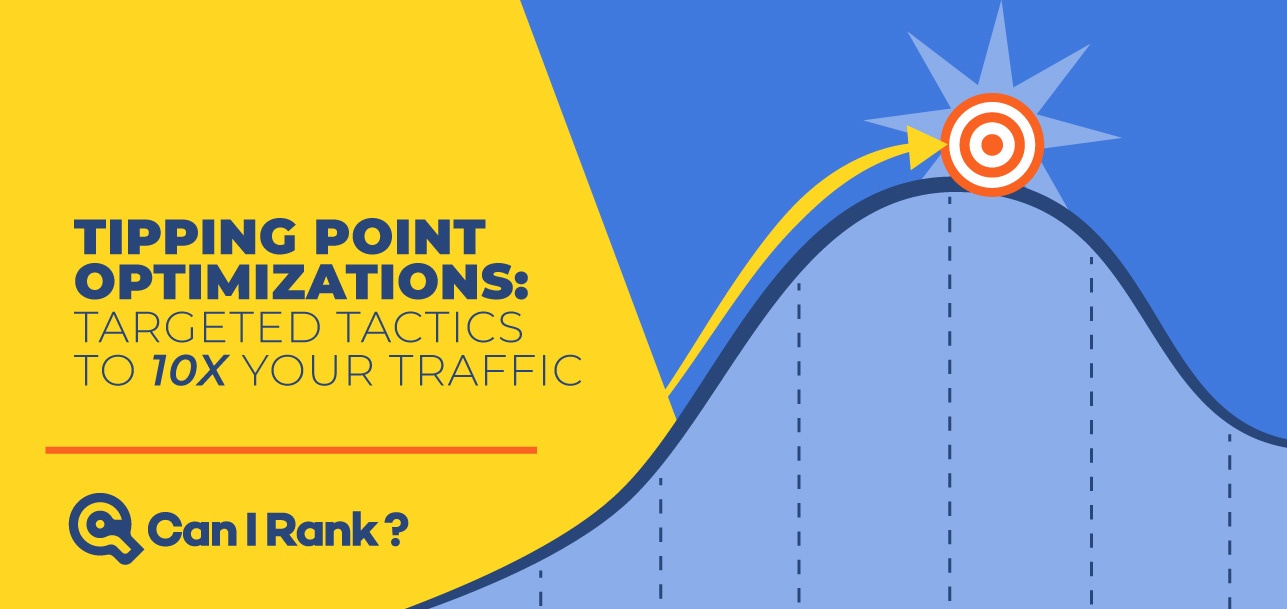The idea of trying to build a brand from nothing is incredibly daunting, especially if you’ve never done it before.
On the same note, the idea of trying to build up your site’s search presence from scratch can be absolutely terrifying.
Imagine starting with zero traffic.
Zilch. Zip. Nothing.
Frightening, isn’t it? However, such a situation doesn’t represent a nightmare scenario for many modern businesses: in fact, it’s a reality.
While some products and services could stand to thrive without a proper search engine strategy a decade ago, the rules of being a business online have changed dramatically in the wake of more advanced algorithms and search-savvy users.
Tens of thousands of blogs are being built daily, spawning millions of posts and shares with no signs of stopping.
The question remains: how to drive traffic to your website in the midst of so much content?
Building Your Search Presence from the Ground Up
Regardless of your industry, the fact remains that every business starts at the bottom in regard to their traffic.
It’s how you decide to climb that separates you from your competitors.
While some sites and niches can perhaps grow more quickly than others, the fact remains that the playing field is relatively even when it comes to getting found online. While our budgets and resources may vary, every newcomer to the field of SEO should take comfort in the fact that there are millions of success stories out there who were once in your shoes.

If you really want to build a solid foundation for your online presence and attract traffic to your site, simply ask yourself the following three questions:
- What are my sources of traffic?
- What does SEO mean for my business?
- What’s my content strategy?
If you think that you can answer such questions with confidence, you’re already ahead of the game; however, let’s indulge ourselves with a reality check.
1. Traffic Doesn’t Come from Thin Air
The “if you built it, they will come” approach to SEO from the mid-2000’s is no longer viable. Today’s businesses have the responsibility of doing their homework and putting in some significant elbow grease if they’re looking to be found through a Google search.
Sure, you can drive traffic through paid advertising platforms (such as Google Adwords or Facebook) or referrals from your brick-and-mortar business; however, organic traffic represents your ability to target specific users interested in what your business has to offer on a much larger scale.
2. There is No-One-Size-Fits-All Approach to SEO
While businesses indeed have the responsibility to learn the ropes of SEO, a blanket strategy simply can’t be applied from business to business.
For example, brick-and-mortar businesses such as sandwich delivery shops or hardware stores may heavily emphasize local search or paid traffic; meanwhile, a digital clothing retailer may focus their advertising on Facebook, Pinterest and Instagram and producing visual content.
If there is a single aspect of SEO that represents a “constant” among all businesses and industries, it’s content marketing. The facts don’t lie: businesses that invest in content marketing get more traffic, more leads and more links. While different industries vary in the amount of content they are expected to produce, content often represents a “snowball” for SMBs; that is, the more you create, the more you reap the benefits.
3. Content Isn’t Enough: You Need a Strategy
Although modern businesses are living and dying based on their content strategies, sprinkling content throughout your site and hoping for the best is ultimately a waste of time, energy and resources. If you hope to stand out from the pack, you’re going to need to craft killer content and promote it heavily.
So what represents “good” high-quality content that readers and search engines will love?
- New, fresh ideas that haven’t been discussed millions of times before; whether you’re providing commentary or breaking new ground with your content, you should strive to offer a unique perspective, angle or message through you site.
- Content that incorporates keywords relevant to your niche, including valuable long-tail keywords which perhaps haven’t been covered heavily industry “experts” or competitors.
- Anything that’s worth linking to, which is especially important in the modern era of viral content; the more entertaining or educational a piece is, the more it tends to get shared around the social channels.
You can’t avoid wrangling SEO or content creation because it’s daunting; therefore, you need a plan in place to tackle and scale your internet marketing head on.
How to Simplify Your Content and SEO Strategies
Here’s the thing: SEO is constantly marketed as being so complicated and seemingly impossible for newbies to understand and implement.
It doesn’t have to be. We have compiled a list of strategies for small budget SEO that have worked for clients in the past.
Likewise, devising a competitive keyword strategy that allows you to build your site from the ground up doesn’t have to take hours of mind-numbering research to implement. Rather than spending sleepless nights tinkering in Google’s keyword planner, take advantage of tools such as CanIRank to make simplify and streamline the process.

CanIRank can provide you with ideas for fresh keywords and how likely you are to rank for them. Instead of playing a game of David versus Goliath when it comes to competing for keywords, work smarter and not harder. Through CanIRank, you get a crystal-clear roadmap for what keywords you can rank for today so you can go after those first.
Uncovering long-tail and low-competition keywords represent the holy grail for content marketers; however, finding such keywords can be a grind. With the right tools in your toolbox, you can uncover such keywords and start ranking sooner rather than later.
How Else Can I Drive Traffic to My Website?
In most cases, content and keywords aren’t enough to rank for competitive, profitable keywords. After creating high quality, targeted content, you need to promote that content. Building links to your site and content represent an incredibly strong signal to search engines; that is, your content is so unique, fresh and compelling that others want to help spread your message.
Chances are there are immediate steps you can take right now to beef up the link building potential of your content. While the following strategies perhaps represent the “baby steps” of link building, they’re relatively straightforward and can be completed at no cost to you beyond your time.
Surfing the Social Networks –
Promoting your content through social media seems like a no-brainer; however, such shares are often the first steps of link building for brands who haven’t yet amassed organic traffic. While the importance of social links in the eyes of Google is somewhat ambiguous, and although the traffic may trickle, starting conversations with followers within your niche is a solid starting point for your content. Be sure to plan out which social media sites will be the best for your early stage business.
Republishing and Guest Posts –
Guest posting has been all the rage over the past few years, representing a win-win for brands to get the most mileage possible out of their content. Seek other sites in your space, preferably not direct competitors, who are willing to give your own site’s content a spotlight. You can also use professional platforms such as LinkedIn and Medium to re-publish content; however, tread lightly with such platforms to prevent facing a duplicate content penalty.
Cultivating Comments –
Putting your content out in the open can feel like a lonely road; however, blog comments, Q&A sites, forums and community sites such as Reddit are great places to start. While you shouldn’t go around blasting linking or make commenting a cornerstone of your search traffic, such conversation can build raise awareness for your brand and build some no-follow links along the way.
Since it’s easy to be perceived as spam when it comes to building links, make sure that you do everything in your power to avoid looking like a spammer.
If you’re looking for specific and robust action items, CanIRank has the best link building tool to identify specific, time-efficient steps you can take to build more links to your site. These steps are backed up by industry data and provide a value score to better prioritize your efforts.
Why Starting at Zero is the Name of the Game
Strangely enough, at “zero” really isn’t the worst place you could be. A lot of startups have had success with SEO.
Opportunity is out there. Unhindered and unfiltered, you can pick and choose your battles in terms of what keywords you want to rank for and what strategies you implement to build up your business online.
Content and link building are the most important pieces of the puzzle for any business looking to boost their traffic and search engine presence. Thankfully, CanIRank’s content ideas and link building action items can help you get started sooner rather than later. By going after keywords you can realistically rank for instead of taking a “pie in the sky” approach to SEO, you might be surprised how quickly you can scale.
Content and link building are the most important pieces of the search engine puzzle. Click To Tweet





Leave A Comment